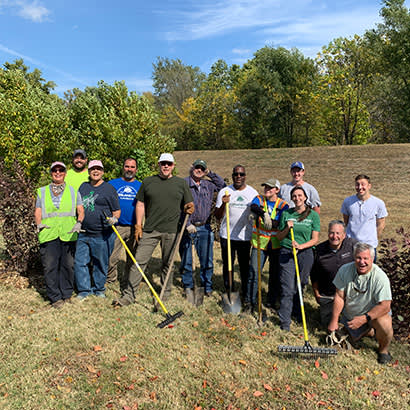
For an enhanced digital experience, read this story in the ezine.
Urban forestry plays a vital role in highlighting the historical and cultural significance of trees in cities.
Trees in a city carry rich symbolism across cultures and contexts. They often serve as gathering points, fostering a sense of community and unity. Public parks or tree-lined streets provide spaces for people to come together, socialize and build connections, symbolizing harmony and togetherness within a diverse urban population.
Certain trees hold cultural and historical significance, representing heritage and traditions within a city. Ancient or heritage trees might symbolize wisdom, longevity and a connection to the past, emphasizing the importance of preserving history amid urban development.
According to the Connecticut Historical Society, the Charter Oak was a white oak tree that played a significant role in U.S. history. Legend says it was where colonists hid the Connecticut Colony’s charter in 1687 to protect it from the English governor’s attempts to revoke it. The tree fell during a storm in 1856, but its legacy lives on in various depictions and memorials.
The Survivor Tree in Oklahoma City, Oklahoma, is an American elm that became a symbol of resilience after surviving the 1995 bombing of the Alfred P. Murrah Federal Building, according to the Oklahoma City National Memorial & Museum. Despite severe damage, it recovered and was transplanted back to the site, serving as a symbol of hope and resilience.
The General Sherman Tree in Sequoia National Park in California is not in a city per se, but this giant sequoia tree is a prominent natural wonder and holds the title of the largest tree by volume in the world. Named after General William Tecumseh Sherman, it stands as a testament to the grandeur and longevity of nature, according to the National Park Service.
The Moon Tree in Washington, D.C., is a sycamore tree grown from seeds that orbited the moon during the Apollo 14 mission in 1971. Seeds from this “moon tree” were distributed across the United States, and one of the offspring resides on the U.S. Capitol grounds, symbolizing the United States’ achievements in space exploration, according to NASA.
Urban Forestry in Overland Park
Our current era of administering urban forest programs provides us the opportunity to continue this practice to reflect society during the 21st century. In Overland Park, Kansas, our urban forestry program works with the Kansas Forest Service to designate Champion Trees.
Champion Trees are designated by a point system calculated using the tree’s circumference, height and crown spread. Identifying Champion Trees honors large, resilient trees; increases awareness of a variety of tree species; and promotes preservation for both historical and scientific interests.
Overland Park has four Champion Trees: black cherry, cherrybark oak, post oak and the shingle oak. Their sizes and locations can be found here.
Overland Park’s forestry program also manages the Plant Pink Forest. This specialty forest primarily features ornamental trees with pink blooms to highlight breast cancer awareness.
These are just a few examples of how urban forest programs play a significant role in cultural and historical awareness and education in our municipalities. As stewards of public spaces, park and recreation professionals can take proactive measures to help others appreciate the significance trees hold in our communities. The potential for further impact and growth in this area is exciting to explore.
Jermel Stevenson, CPRP, is Director of Parks and Recreation at the City of Overland Park, Kansas.

